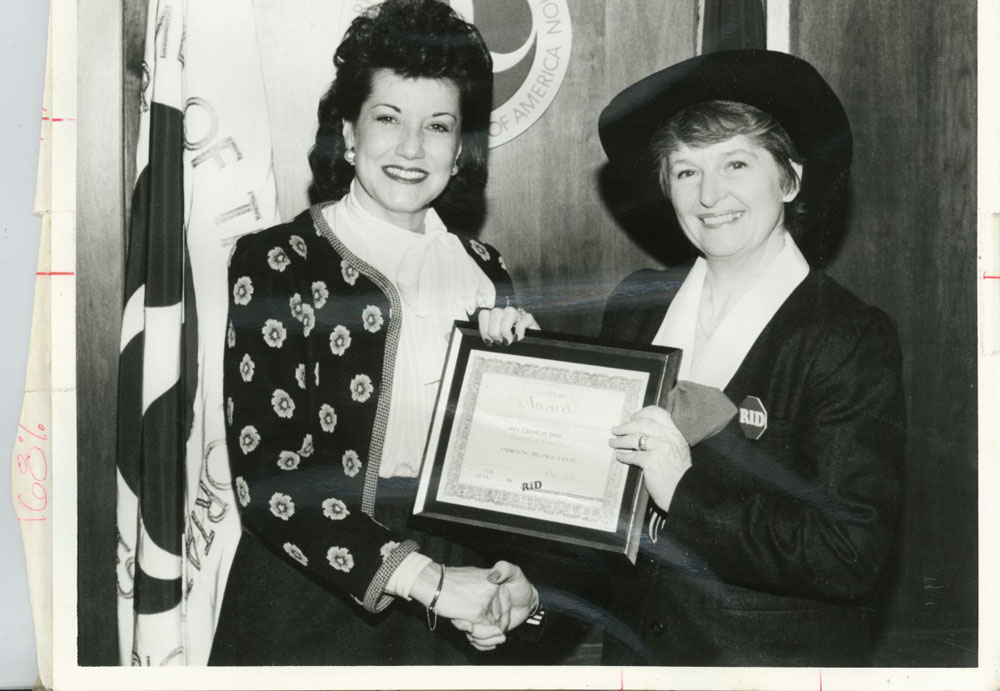When someone dies a preventable death, there is no obligation for loved ones to become activists, aiming to stop similar deaths. It is enough to merely grieve for a tragic loss.
But some people turn their grief into action, devoting countless hours to educating the public and creating change. One such person in Doris Aiken, who turns 90 on July 31, 2016 and is now in her 39th year of activism to prevent drunk driving. Most amazingly, perhaps, is that Aiken barely knew the two teenagers whose deaths would change her life. I am honored to have met her when researching my book on the history of drunk driving, One for the Road.
Aiken was making dinner for her family on December 5, 1977 when she noticed a headline in the local Schenectady, New York newspaper. A drunk driver, with a blood alcohol level more than twice the legal limit and an open can of beer between his knees, had killed two local teenagers that Aiken knew distantly.
As a journalist who hosted a television program that addressed pressing social issues, Aiken knew a good story. But when she began digging, what she discovered astounded her.
The local district attorney chuckled when she asked him whether the driver would receive severe punishment. “No, we don’t take away licenses or put people in jail,” he said.
“This is an accident,” the D.A. added. “He didn’t mean to do it and probably feels very bad about it.” He advised Aiken not to get involved.
By even reaching the D.A., Aiken had done better than the mother of the two victims. He would not, Aiken later wrote, even return the bereaved woman’s phone calls.
What followed over the next months and years was pure grassroots activism. With the backing of her Unitarian church, Aiken organized a small meeting of interested citizens. This group would eventually become Remove Intoxicated Drivers (RID), America’s first anti-drunk driving organization, in 1978.
Once the word started getting out about RID, stories similar to the Schenectady crash came pouring in. A North Carolina couple wrote that their son had been killed by a drunk driver, who had been allowed to plead down to only one month of a suspended license. “This does prove,” they wrote, “that death by motor vehicle is excusable.”
Other activists across the country were also becoming furious at the lack of justice for the victims of drunk driving. In Maryland, Cindy Lamb’s car was hit by a drunk driver with three previous driving-while-intoxicated (DWI) arrests who had just imbibed two pints of whiskey. Lamb’s five month-old daughter Laura was permanently paralyzed. In California, a police officer told Candy Lightner, whose 13-year-old daughter Cari had been killed by a drunk driver with four previous DWI arrests, that the man would surely not go to prison. “That’s the way the system works,” he explained. Lamb and Lighter would go on to become prominent figures with Mothers Against Drunk Driving (MADD), which became the largest and best-known anti-drunk driving organization.
By 1983, RID had 130 chapters in 30 states. But it was in New York that it had its major impact. Thanks to persistent lobbying and a series of vigils in memory of the dead, RID got the state legislature to pass new laws that prevented plea bargaining, immediately revoked the licenses of second-time offenders and earmarked fees collected from drunk driving cases for better enforcement measures. RID also helped to oust judges who were repeatedly lenient to drunk drivers.
Aiken and her colleagues also paid close attention to the issue of victims’ rights, an important theme during the Reagan-era 1980s, and one that underscored the emotional concerns of survivors. RID informed victims and family members involved in drunk driving crashes how to obtain the accident report, hire a lawyer, obtain the record of the offending driver and, if interested, to make “impact” statements at trial.
So what successes have RID, MADD and government agencies such as the National Traffic Highway Safety Administration achieved? Many. Over the past 30 years, the legal blood alcohol level was lowered to 0.08%, the drinking age was raised to 21 and the public has been deluged with educational messages about designated drivers and how “friends don’t let friends drive drunk.” Deaths from drunk driving-related crashes, over 25,000 in 1968, now total roughly 10,000 annually.
So why is Doris Aiken still fighting the good fight? These days, she is primarily a consultant. Her children, Jane and William Aiken, run RID, which has about 1,200 active members, spanning all 50 states. The three meet in the same kitchen in which Doris Aiken first read the headline about the two Schenectady teenagers killed in 1977. There they hash out which topics to discuss in the RID newsletter, such as the use of ignition interlocks for drivers convicted of DWI, the pros and cons of various public information campaigns and how defense lawyers (still) try to get their DWI clients off the hook. The Aikens are particularly proud that RID has never accepted any money from the alcohol industry.
Fittingly, Doris’ “President’s Letter” in the spring 2016 newsletter tells the story of Cody Veverka and Alicia Tamboia, two recent victims of a drunk driver, and how RID is trying to get them justice.
When Doris Aiken published her autobiography in 2002, she called it My Life As A Pit Bull. It’s great that she still is one.
Originally published on forbes.com on July 27, 2017.
